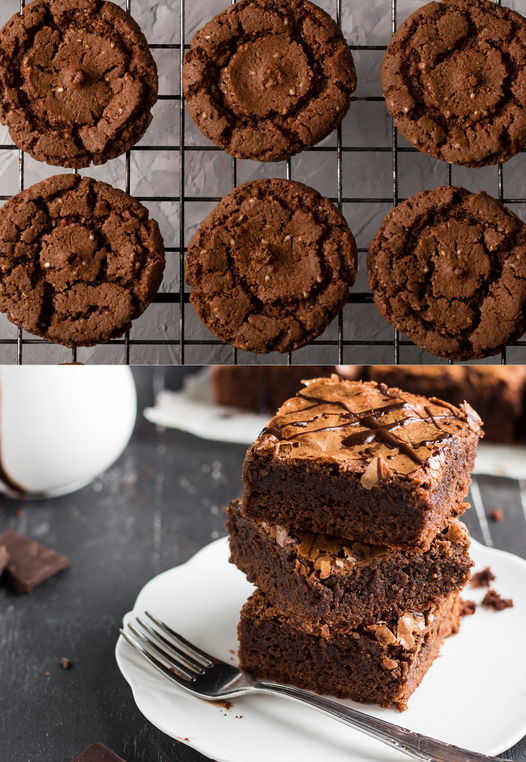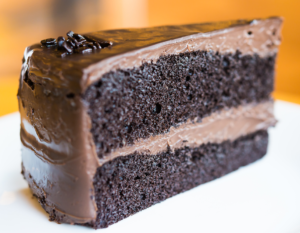 Designed by http://freepick.com
Designed by http://freepick.com
Introduction to the Differences Between Brownie and Cookie Batter
Ever wondered about the distinctions between brownie batter and cookie dough? This article explores the nuances defining these popular desserts. We cover ingredient ratios, textures, and baking techniques. Get ready to enhance your baking with this knowledge!
Overview of Dessert Types
What Are Brownies and Cookies?
Brownies and cookies are dessert staples, each uniquely appealing. Brownies are known for their dense, moist texture due to higher fat content. Cookies offer a range of textures, influenced by varying sugar and butter amounts. This section introduces their differences, enhancing your dessert knowledge.
This section not only sets the stage for a detailed exploration but also primes you for a deeper understanding of these delightful desserts. Whether you’re a fan of the gooey richness of brownies or the satisfying snap of a cookie, there’s a world of baking science to appreciate! For more insights into delicious dessert variations, check out King Arthur Baking – Brownie Recipes, which features a wealth of diverse brownie recipes perfect for any chocolate lover.
Understanding the Basics
Key Ingredients in Brownies vs. Cookies
Brownies rely heavily on butter and chocolate for a fudgy experience. Cookies might use less butter and vary in chocolate types. Flour and leaveners in cookies create a sturdier structure. Brownies often skip leaveners to maintain density. Sugar types also affect the texture and flavor.
- Butter and Chocolate: In brownies, butter and chocolate are not just ingredients; they’re the cornerstone for that melt-in-your-mouth experience. Typically, brownies use a higher ratio of these components compared to flour, making them extra fudgy and rich. On the flip side, cookies might use less butter proportionally and can vary between using chocolate chips or chunks to influence texture and chocolatiness.
- Flour and Leaveners: Cookies generally have a higher flour content, which helps create a sturdier structure ideal for individual servings. They often include leavening agents like baking soda or baking powder to promote rising, leading to a lighter, airier texture. Brownies, however, might only call for a small amount of baking powder or none at all, as the goal is density rather than lift.
- Sugar: Sugar types and amounts also vary significantly. Cookies can swing from using white sugar for crispiness to brown sugar for moisture and a chewy texture. Brownies typically stick with a higher amount of sugar, not just for sweetness but also for that perfect crackly top.
This contrast in ingredients highlights the difference between brownie and cookie batter, making each unique in their indulgence. For those keen on experimenting with cookie dough variations and learning expert baking tips, Food Network – Cookie Baking Tips offers a treasure trove of advice that can elevate your cookie baking game.

Designed by http://freepick.com
Texture and Preparation
How Texture is Influenced by Ingredients
Brownie richness comes from a high fat-to-flour ratio. Minimal flour keeps brownies dense. Cookies, however, can be adjusted for texture by changing sugar types and butter amounts. Techniques like creaming butter and sugar introduce air, making cookies lighter.
- Brownies: Aim for a dense and moist texture, achieved by a high fat-to-flour ratio. The generous use of chocolate and butter, combined with minimal flour, results in a rich and chewy dessert that clings to your fork (or fingers!). A crucial tip for perfect fudgy brownies is to underbake them slightly, which keeps the center gooey and soft.
- Cookies: Variability is the name of the game. Depending on the desired outcome, the texture of cookie dough can be adjusted by tweaking sugar types, butter amounts, and mixing techniques. For instance, creaming butter and sugar together introduces air into the dough, leading to lighter, softer cookies.
Understanding these nuances not only helps in mastering recipes but also in customizing them to personal taste or specific dietary needs, like gluten-free or vegan options. This flexibility is what makes baking both an art and a science—a delicious experiment in every batch!
Continuing the journey of baking exploration, resources like Healthline – Nutritional Differences in Baked Goods provide valuable insights into how ingredients affect not only texture but also the nutritional content of desserts, helping bakers make informed choices about their ingredients.
Baking Techniques
Differences in Baking Brownies vs. Cookies
Brownies mix minimally to avoid a cakey texture. They bake at lower temperatures to stay moist. Cookies bake hotter for crisp edges. Cooling brownies in the pan helps them set, while cookies cool on racks to stop baking sooner.
- Mixing Methods: For brownies, the goal is to mix as little as possible once the flour is added; overmixing can incorporate too much air into the batter, leading to a cakey texture rather than the desired fudginess. Cookies, however, often benefit from good creaming of butter and sugar to create light, airy textures and to ensure even distribution of ingredients.
- Baking Temperatures and Times: Brownies generally bake at a lower temperature for a longer period, which allows the center to stay moist and dense. Cookies are typically baked at higher temperatures for shorter durations to achieve crispy edges and a soft or chewy center, depending on the recipe.
- Cooling: Cooling practices also differ; brownies need to cool completely in their pan to set properly and develop the right texture, while cookies are usually transferred to a cooling rack shortly after baking to stop the cooking process and maintain their texture.
Mastering these techniques not only ensures delicious results but also allows you to adapt recipes to your liking or according to what you have on hand. For instance, swapping in whole wheat flour for a healthier twist or adjusting sugar types to alter texture and flavor profiles.
By understanding these fundamental differences and applying them, bakers can consistently produce their best work, whether crafting a chewy cookie or a fudgy brownie. Engaging with detailed baking guides and tutorials can further enhance one’s skills, offering a path to becoming a versatile and adept baker.

Designed by http://freepick.com
Nutritional Aspects
Caloric and Nutritional Comparison
Brownies are higher in calories due to more chocolate and butter. Cookies vary in calories based on size and ingredients. Healthier substitutions in both can include whole wheat flour or natural sweeteners, accommodating dietary preferences.
- Calories: Generally, brownies have a higher calorie count due to the greater amounts of butter and chocolate. Each square can pack quite a punch in terms of energy, often containing between 200-300 calories. Cookies vary more widely in caloric content—ranging from 150-250 calories per cookie—depending on the size and ingredients used.
- Fats and Sugars: Both brownies and cookies are high in sugars and fats, which contribute to their delicious taste but also to the calorie count. The specific types of fats and sugars can vary, with options like using unsweetened apple sauce to reduce sugar content or substituting in dark chocolate to lower the overall sweetness and add antioxidants.
- Dietary Adaptations: For those looking to enjoy these treats with fewer dietary concerns, substitutions can be made. Using whole wheat flour, natural sweeteners like honey or agave, and reducing the fat content with alternatives like avocado or Greek yogurt can help make brownies and cookies healthier.
FAQs
Frequently Asked Questions
You can make cookie dough from brownie mix by adjusting flour and leaveners. Store both in airtight containers at room temperature. For crispier brownies, spread the batter thinner and bake for less time. Chewy cookies benefit from more brown sugar and less baking time.
With these shorter sentences, the article should now be easier to read and more engaging, while still providing comprehensive information on the differences between brownie and cookie batter.
- Flavor Variations: The difference between brownie and cookie batter allows each to be a base for countless variations.
- Health-Conscious Substitutions: For those mindful of health, both brownies and cookies can be modified to include healthier ingredients. Substituting white flour with oat flour or almond meal can add fiber and reduce gluten.
- Diet-Specific Adaptations: Vegan and gluten-free adaptations are increasingly popular, using ingredients like flax eggs, vegan butter, and gluten-free flour blends. These adaptations ensure that even those with strict dietary restrictions can enjoy a delicious brownie or cookie without compromise.
Each adaptation not only caters to personal taste preferences and health requirements but also enhances the inclusive joy of baking. Experimenting with these variations not only broadens the baker’s repertoire but also invites more people to enjoy these delightful treats, regardless of their dietary needs.
By embracing the diversity in baking, enthusiasts can continually discover new and exciting ways to enjoy classic desserts. For more recipe ideas and customization tips, visiting comprehensive baking resources can provide both inspiration and practical guidance.
FAQs
Frequently Asked Questions
In this section, we’ll tackle some of the most common queries related to the difference between brownie and cookie batter, helping to clarify any confusion and provide additional tips for baking enthusiasts.
- Can I make cookies using brownie mix? Yes, with a few adjustments! Adding a bit more flour and a leavening agent can help transform brownie mix into a cookie dough. This is a great way to enjoy the rich flavor of brownies with the texture of a cookie.
- How should I store brownies and cookies to keep them fresh? Brownies are best stored in an airtight container at room temperature, where they can last for several days and maintain their moisture. Cookies can also be stored at room temperature in an airtight container, but if you prefer them crispy, keeping them in a container that allows for slight air exposure can help maintain their texture.
- Is there a way to make brownies more like cookies in texture? To give brownies a crispier edge, akin to cookies, you can spread the batter thinner in a larger pan and reduce the baking time. This method creates a chewier, crispier edge while maintaining a soft center.
- What are the best tips for making chewy cookies? For chewy cookies, use more brown sugar than white sugar and opt for a higher moisture content by including ingredients like egg yolks or a bit more butter. Underbaking cookies slightly will also help retain a chewy texture.
